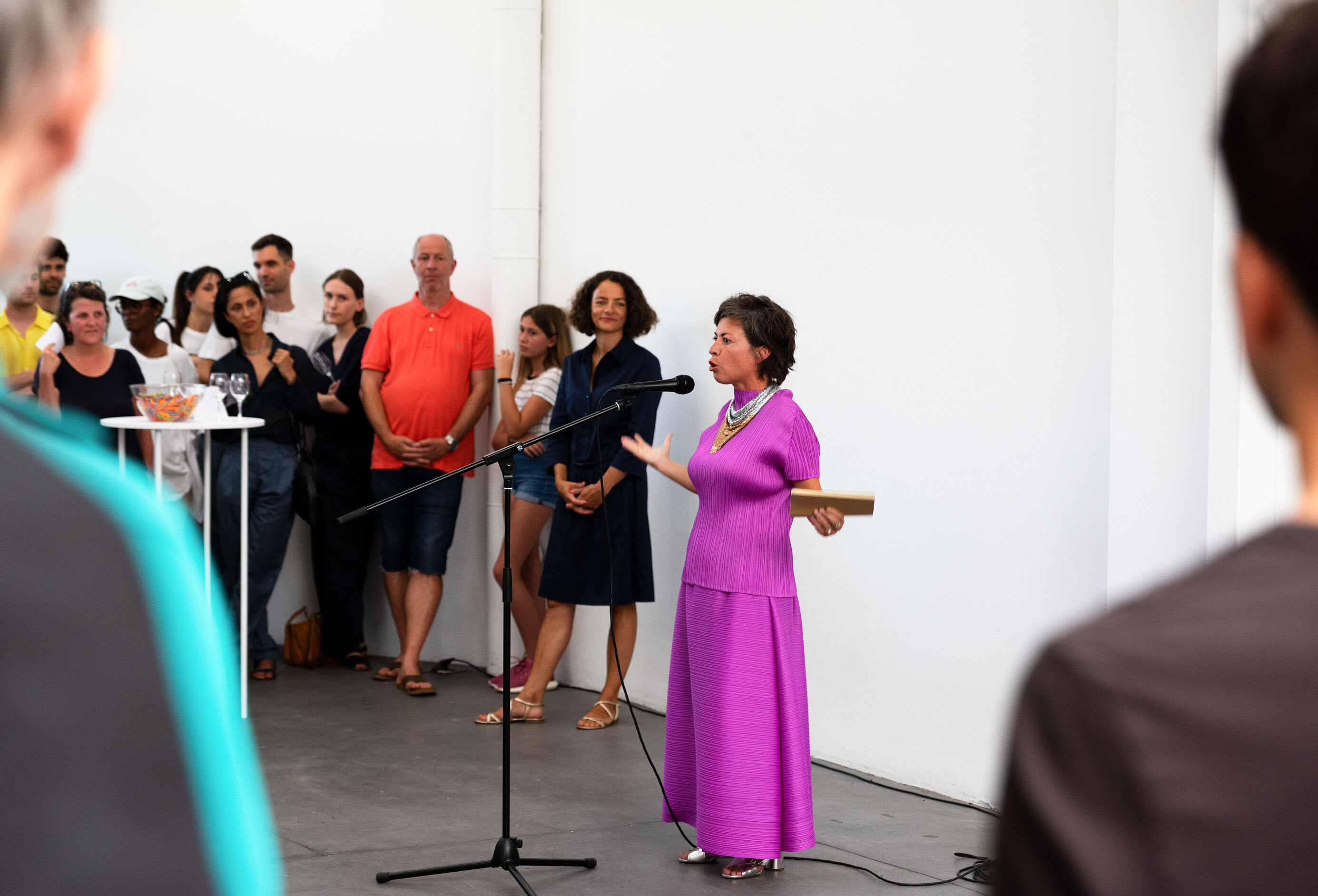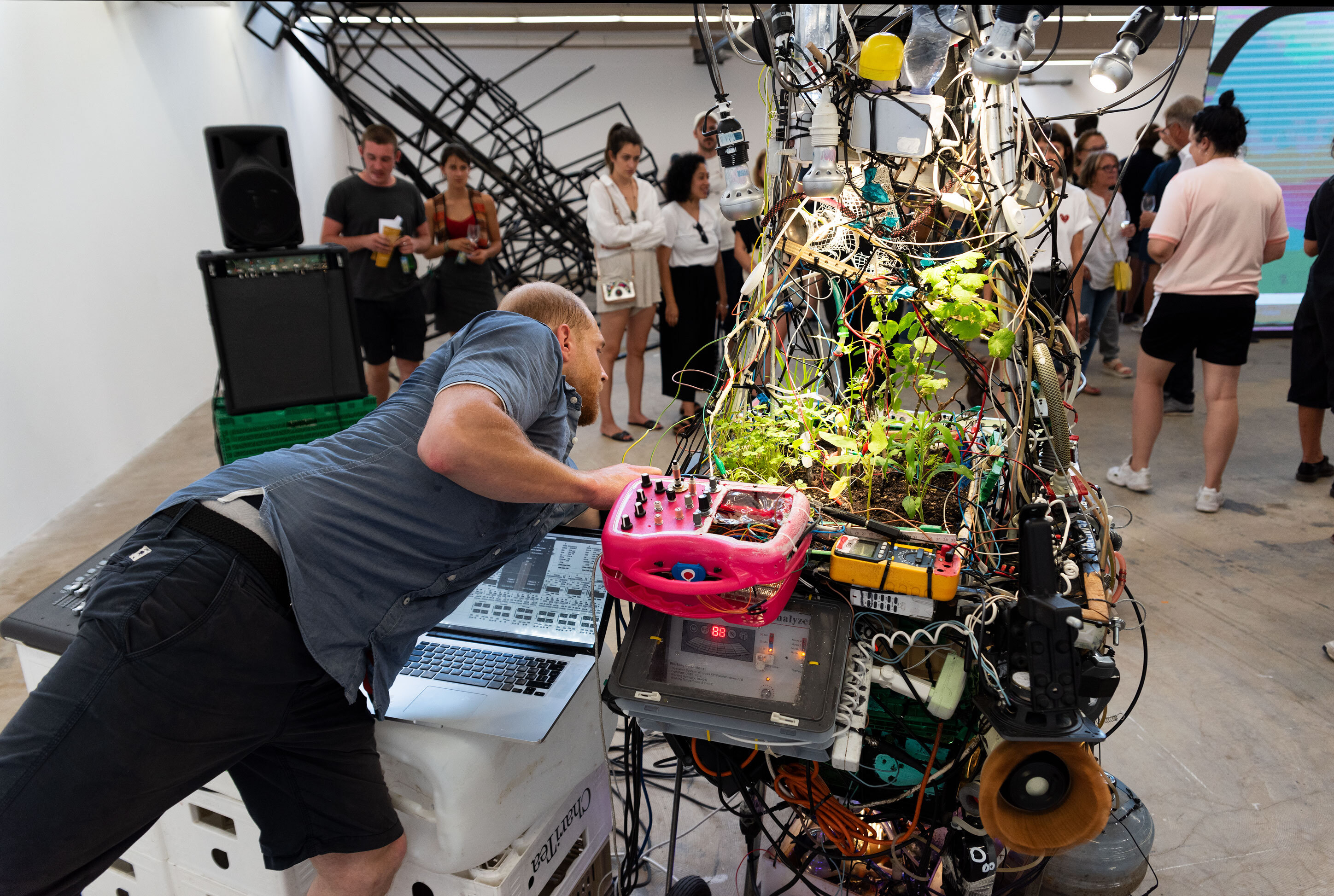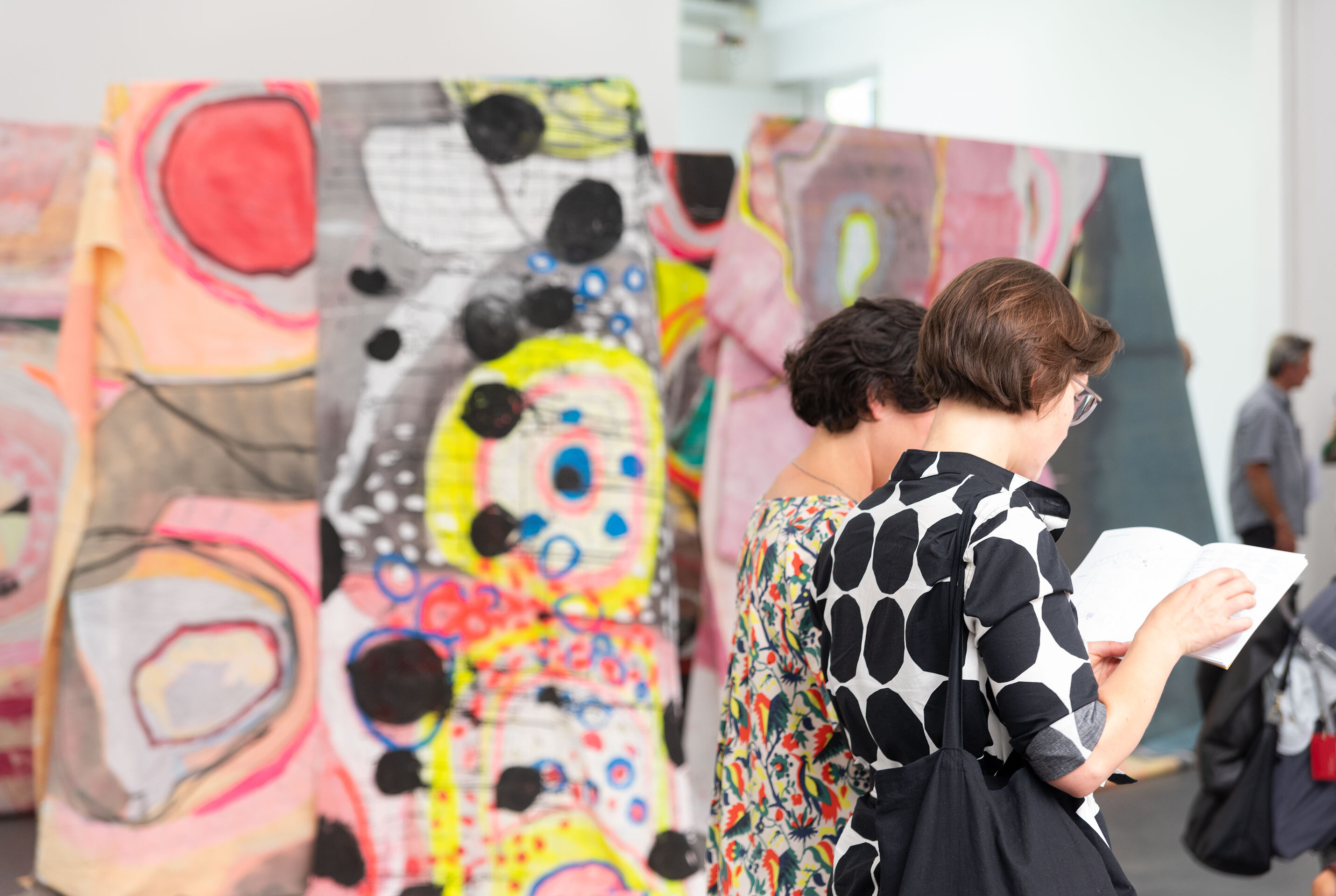I-HOOD
«Next Generation»
Graduation Exhibition Bachelor and Master HGK FHNW
26.8. —
1.9.2019





Selected press coverage
Basler Zeitung, 27.8.2019
- Osama Al Rayyan
- Brigham Baker
- Louise Bozelec
- Michael Etzensperger
- Ramon Feller
- Gerome Johannes Gadient
- Fabian Gemperle
- Marc Hirt
- Jeronim Horvat
- Adrian Huber
- Christopher Hunter
- Martin Jakob
- Claudia Jenni Palma
- Christelle Kahla
- Till Langschied
- Sonja Lippuner
- Mathias Lüscher
- Laura Lüthi
- Tiphanie Kim Mall
- Alexandra Meyer
- Dominic Michel
- Katrin Niedermeier
- Vera Obertüfer
- Noemi Pfister
- Mia Sanchez
- Jérémie Sarbach und Flurina Badel
- Svenja Schennach
- Jonas Schulenburg
- Fabio Sonego
- Angela Staffelbach
- Stella
- Jan van Oordt
- Timothée Verheij
- Jodok Wehrli
- Andrea Vera Wenger
- Lucas Wirz
- Sophie Yerly
Manuel Guldimann, Andreas Kalbermatter, Niku Alex Muçaj, Giangiacomo Rossetti, Guadalupe Ruiz, Micael Santos
For what is now the fourth time, the Institut Kunst (Art Institute) of the Hochschule für Gestaltung und Kunst is invited into the Kunsthaus Baselland, offering a young generation of developing artists an exciting platform and a professional framework within which to present their degree works to the public. These important graduation exhibitions are curated by a changing team of curators: 2015, Lockeres Denken, curated by Ines Goldbach, Director of the Kunsthaus Baselland, and Chus Martínez, Director of the Institut Kunst der HGK FHNW; 2017, Wir heissen euch hoffen, curated by Carolyn Christov-Bakargiev, Director of the Castello di Rivoli Museum of Contemporary Art as well as the GAM Galleria Civica, Turin, and Chus Martínez; 2018, Atlas of Heavens, curated by Sofía Hernández Chong Cuy, Director Witte de With Center for Contemporary Art in Rotterdam, and Chus Martínez. In 2019 the exhibition will be curated by Filipa Ramos, author and curator, and Chus Martínez.
This year’s master’s and bachelor’s graduation exhibition of the Art Institute HGK FHNW in Basel — curated by writer Filipa Ramos, Editor in Chief of art-agenda, and Chus Martínez, Head of the Art Institute — presents newly produced works by 43 artists and proposes a collective questioning of artistic production in its relation to social and natural worlds through the “I.”
For the fourth year, the Art Institute’s graduation exhibition is hosted by Kunsthaus Baselland. The fact that this major event takes place in an institution, just as the collaboration between Chus Martínez and a guest curator, are both reflecting the particular nature of this moment in the training of young artists: it stresses the transition from the supervised environment of the art school to the stakes of the professional artist’s career. It is also the result of the extraordinary cultural density that art students in Basel are privileged to experience during their time at the Art Institute.
The discovery of the “I” is probably the first artwork—as we understand this notion today—that was ever made, and “I-Hood” describes its vanguard, as well as its formal and social exploitation. The question of the “I” is different to the question of the “self.” The self is reflexive — it is not “me” but “myself.” It refers to the modern ideal of authenticity — to the imperative of being true to oneself. The “I,” on the contrary, implies closeness and intimacy. It is a modern value: sincerity, or the condition of being true to others. This critical divide forms our contemporary discourses on personal, social, political, and creative life. We have very few substances at hand — art being the most important of them — that allow us to observe, revise, and invent new elements and modes of conduct that challenge these immense but problematic inherited ideals.
The relation between the “I” and the “self” has parallels in our current relation to images and writing, images being the “I” and writing the “self.” We are constantly trained to think through images — never have we been so exposed to them, so keen to produce, distribute, and consume them. At the same time, we are constantly writing messages, posts, comments, emails… Thousands of people write novels, and at the same time literature is in a crisis. Millions of people take photographs and yet photography is also in a crisis. Why? An initial answer invites us to reconsider the way we define these processes. If we replace the word “crisis” with “gigantic and unbelievable success” it results in the same reality. This cascade of producing narratives and images brings us closer to the contexts and environments where storytelling and symbol-making are crucial. There is a plain narrating and dealing with images that unites all of us in an unprecedented way. Memory on the move.
Many of the works in this year’s graduation exhibition, “I-Hood,” reflect on our contemporary interest in continuously referring to ourselves. Artists provide us with an incredible opportunity to engage in a dynamic relation withsuch questionsasidentity, thus enablingus to reframe history from both the perspectives of the individual and communities. In a humble but effective manner, the artworks presented in the exhibition create new images of our relation with history, time, nature, the environment, and the way we assign roles to women and men as well as to other, not necessarily human, life forms, as well as new technologies such as artificial intelligence. Technology is also a companion that may help us to understand how much we need communication, and how important it is to learn how to use all these channels — like art — to experience new and greater dimensions of being present, being in touch, feeling what we sense.
The narratives of every one of the over forty works presented in the exhibition “I-Hood” are an invitation to lose ourselves in a journey that is free of the norms and constraints we know. Unlike images from the computer, social or digital media, these images demand that our eyes explore every detail and that we move within them, enter them, see them from above and below. We will also be able to hear and touch the images, for their sounds and textures confer a sense of reality. We are there, present and important to ourselves.